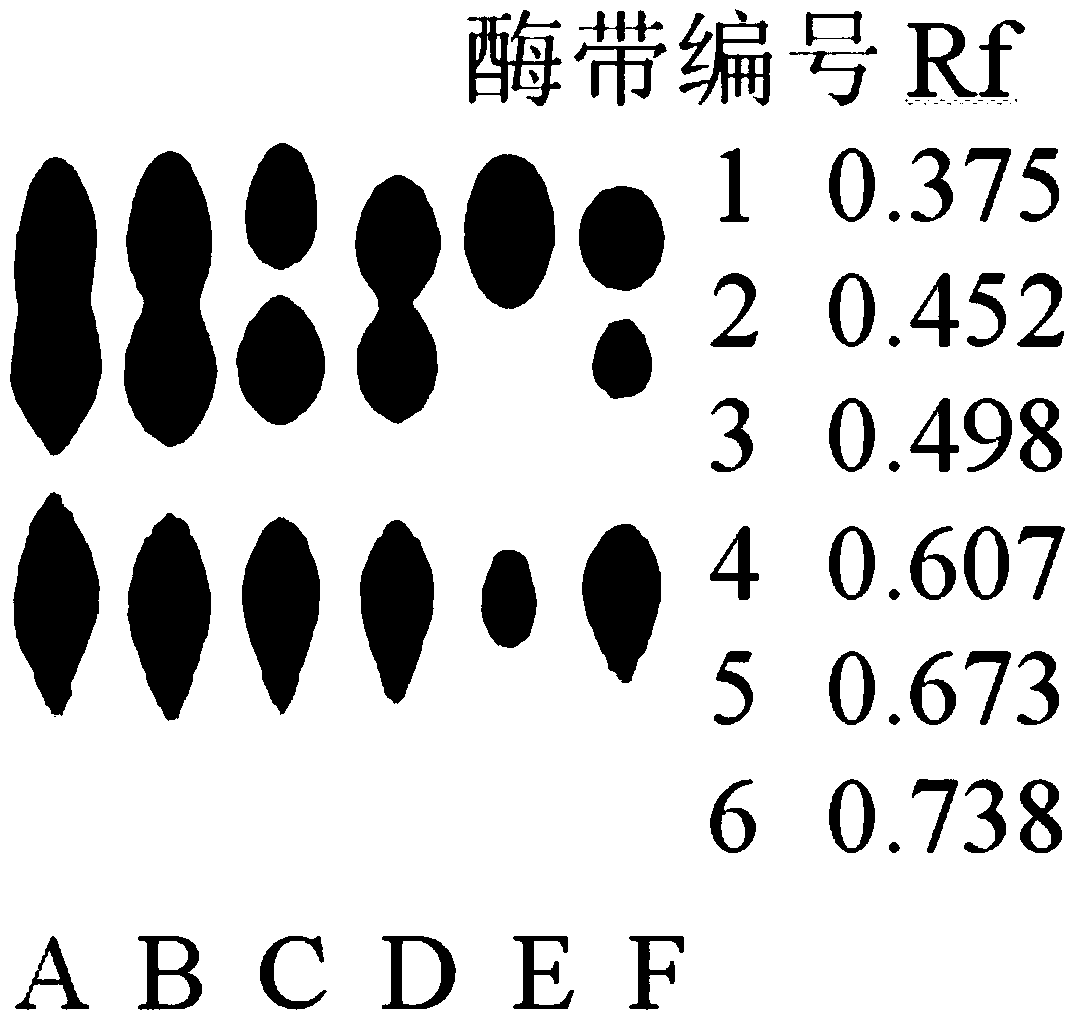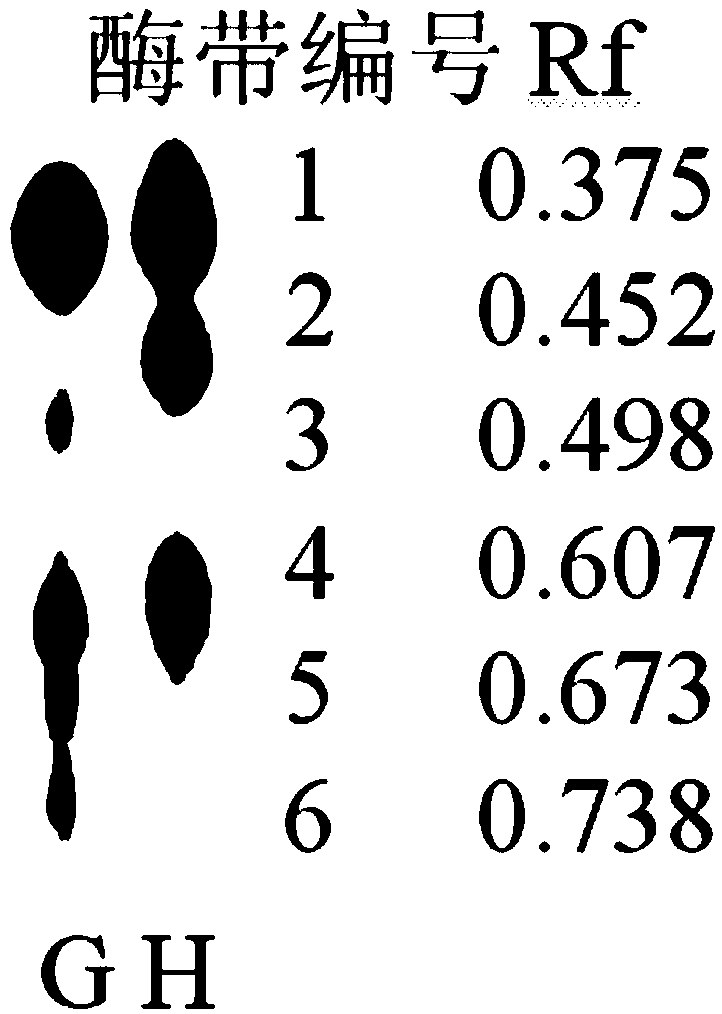Method for identifying closeness of genetic relationships of pumpkins
A technology of kinship and pumpkin, which is applied in the field of identifying the distance of kinship of pumpkins, can solve the problems that it is difficult to accurately identify the distance of kinship of pumpkins, and achieve the effect of convenient operation and intuitive map
- Summary
- Abstract
- Description
- Claims
- Application Information
AI Technical Summary
Problems solved by technology
Method used
Image
Examples
Embodiment 1
[0032] The method for constructing the general map of enzyme electrophoresis of pumpkins from each known place of origin includes:
[0033] (A) Take 1 g of pumpkin root, add 3 mL of phosphate buffer solution with a concentration of 0.05 mol / L, homogenize in a pre-cooled mortar and centrifuge, take the supernatant, add glycerin and shake well to obtain the enzyme electrophoresis solution and store it at low temperature ;
[0034] (B) using a gel electrophoresis system to perform electrophoresis on the enzyme electrophoresis solution described in step (A);
[0035] (C) Mapping the pattern and counting the number of bands based on the results of step (B).
[0036] The pH of the phosphate buffer described in the step (A) is 6.8, the added amount of glycerol is 20 (wt)%, and the temperature for cryopreservation is -20°C; the gel electrophoresis system described in the step (B) is a discontinuous acrylamide gel Gel electrophoresis system; the electrophoresis is steady flow electro...
Embodiment 2
[0038] The method for constructing the general map of enzyme electrophoresis of pumpkins from each known place of origin includes:
[0039] (A) Take 1 g of pumpkin stem, add 3 mL of phosphate buffer solution with a concentration of 0.05 mol / L, homogenize it in a pre-cooled mortar and centrifuge, take the supernatant, add glycerin and shake well to obtain the enzyme electrophoresis solution and store it at low temperature ;
[0040] (B) using a gel electrophoresis system to perform electrophoresis on the enzyme electrophoresis solution described in step (A);
[0041] (C) Mapping the pattern and counting the number of bands based on the results of step (B).
[0042] The pH of the phosphate buffer described in the step (A) is 6.8, the added amount of glycerol is 20 (wt)%, and the temperature for cryopreservation is -20°C; the gel electrophoresis system described in the step (B) is a discontinuous acrylamide gel Gel electrophoresis system; the electrophoresis is steady flow elec...
Embodiment 3
[0044] The method for constructing the general map of enzyme electrophoresis of pumpkins from each known place of origin includes:
[0045] (A) Take 1 g of pumpkin leaves, add 3 mL of phosphate buffer solution with a concentration of 0.05 mol / L, homogenize in a pre-cooled mortar and centrifuge, take the supernatant, add glycerin and shake well to obtain the enzyme electrophoresis solution and store it at low temperature ;
[0046] (B) using a gel electrophoresis system to perform electrophoresis on the enzyme electrophoresis solution described in step (A);
[0047] (C) Mapping the pattern and counting the number of bands based on the results of step (B).
[0048] The pH of the phosphate buffer described in the step (A) is 6.8, the added amount of glycerol is 20 (wt)%, and the temperature for cryopreservation is -20°C; the gel electrophoresis system described in the step (B) is a discontinuous acrylamide gel Gel electrophoresis system; the electrophoresis is steady flow elect...
PUM
 Login to View More
Login to View More Abstract
Description
Claims
Application Information
 Login to View More
Login to View More - R&D
- Intellectual Property
- Life Sciences
- Materials
- Tech Scout
- Unparalleled Data Quality
- Higher Quality Content
- 60% Fewer Hallucinations
Browse by: Latest US Patents, China's latest patents, Technical Efficacy Thesaurus, Application Domain, Technology Topic, Popular Technical Reports.
© 2025 PatSnap. All rights reserved.Legal|Privacy policy|Modern Slavery Act Transparency Statement|Sitemap|About US| Contact US: help@patsnap.com


